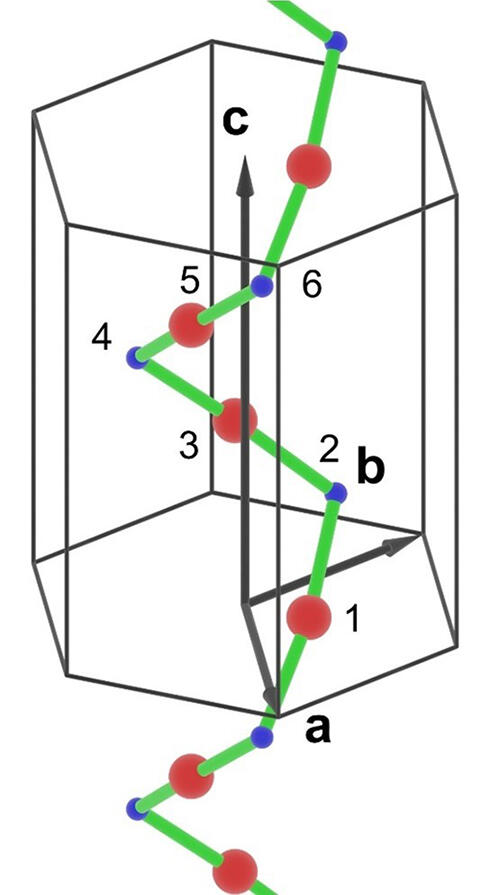The research team of Professor Takuya Satoh and Professor Shuichi Murakami of the Department of Physics, Tokyo Institute of Technology, together with Professor Jun-ichiro Kishine of the Open University of Japan, and Professor Yoshihiko Togawa of the School of Engineering, Osaka Metropolitan University, has discovered a "mode of atomic motion (chiral phonon)" in chiral crystals of cinnabar (α-HgS).

Provided by Tokyo Institute of Technology
Although chiral phonons in two-dimensional materials have been reported before, researchers have been hoping to discover true chiral phonons that propagate in space while rotating. Satoh stated, "We thought we could discover them by shining circularly polarized light with true chirality properties onto 3D chiral materials with a helical axis."
The research team focused on three-dimensional chiral crystals with a helical axis and performed circularly polarized Raman scattering measurements using α-HgS crystals and succeeded in transferring the angular momentum of the circularly polarized light to chiral phonons. A comparison with first-principles calculations revealed that the chiral phonons observed in this study propagate along the helical axis (that is to say, they are true chiral phonons). The research team found that the propagation direction of the chiral phonons is the inverse of the direction of the atoms' rotation, which is reversed by the crystal's chirality (right-handed or left-handed).
This result clearly demonstrated the conservation of pseudo-angular momentum in the Raman scattering process. Furthermore, this method has made it possible to determine the chirality of chiral crystals with a helical axis at optical microscopic resolution.
This discovery will enable angular momentum transfer to be an information carrier in optical/phononics devices and is expected to lead to the creation of opto-phononic-spintronic devices in combination with spintronics devices.
Satoh commented further, "Because the pseudo-angular momentum and propagation direction of phonons can be controlled by the helicity (clockwise or counterclockwise) of circularly polarized light, it can be used as an information transmission medium. We are aiming to create opto-phononic-spintronic devices by transferring not only light and phonons, but also angular momentum including spin."
■ True chirality: A system in which two different mirror-image isomeric states exist and are interconverted via spatial inversion, but not via a combination of time inversion and spatial rotation. The motion of atoms propagating while rotating satisfies the definition of true chirality.
■ False chirality: A system in which two different mirror-image isomeric states exist and are mutually transformed either by spatial inversion or by temporal inversion.
Journal Information
Publication: Nature Physics
Title: Truly chiral phonons in α-HgS
DOI: 10.1038/s41567-022-01790-x
This article has been translated by JST with permission from The Science News Ltd.(https://sci-news.co.jp/). Unauthorized reproduction of the article and photographs is prohibited.




